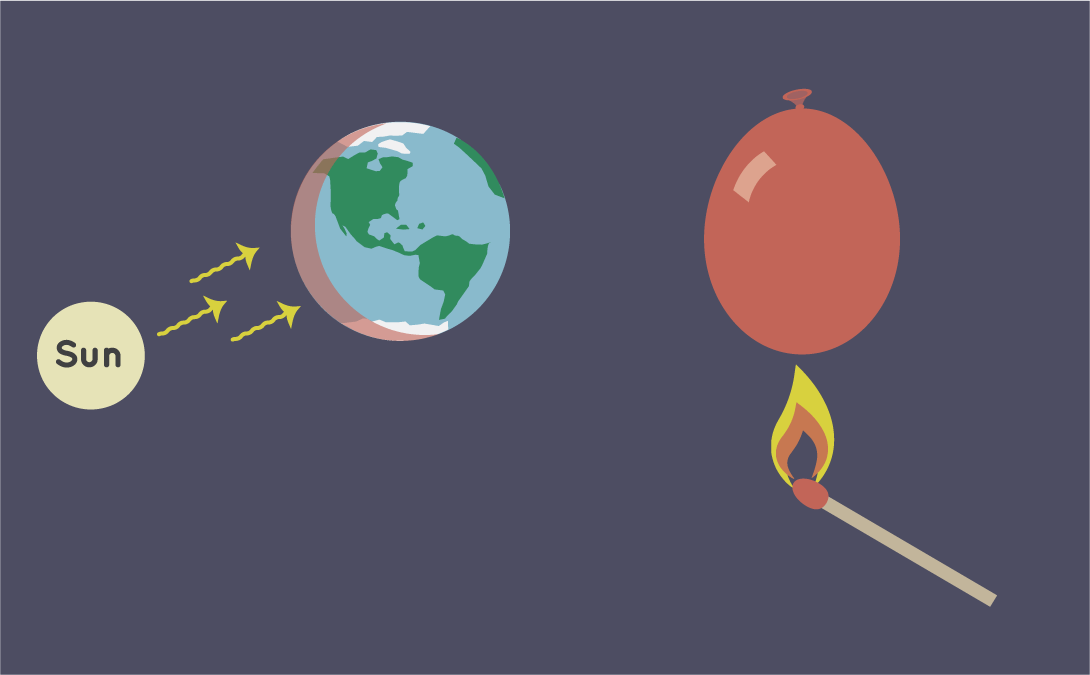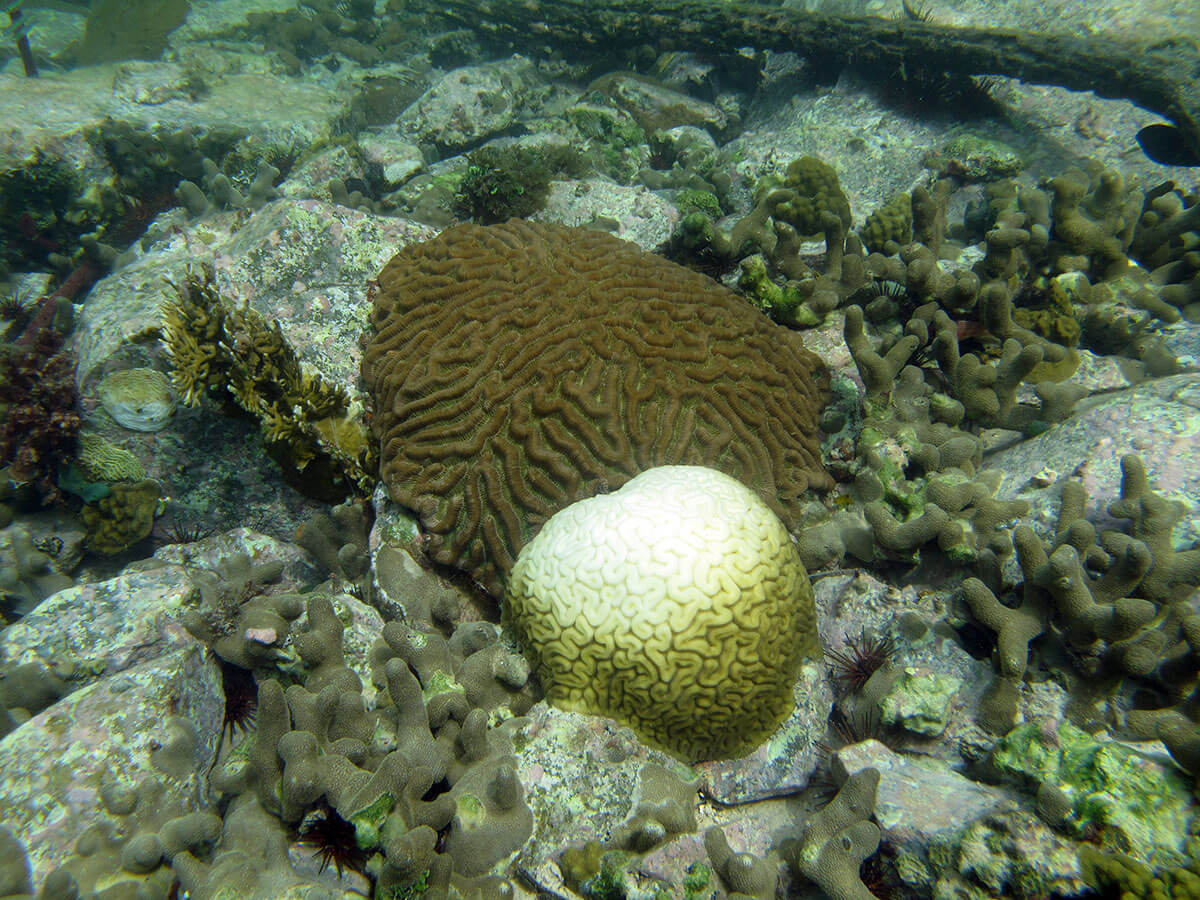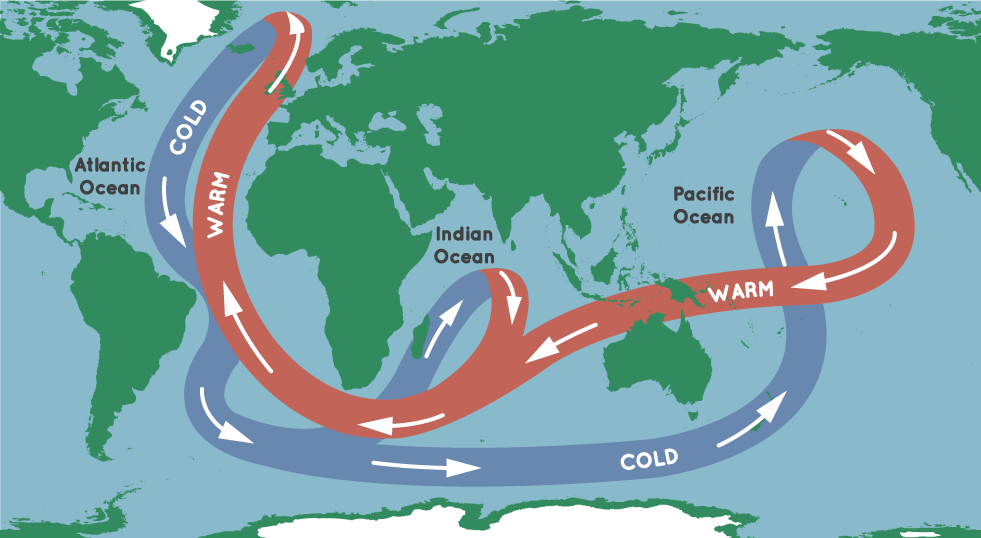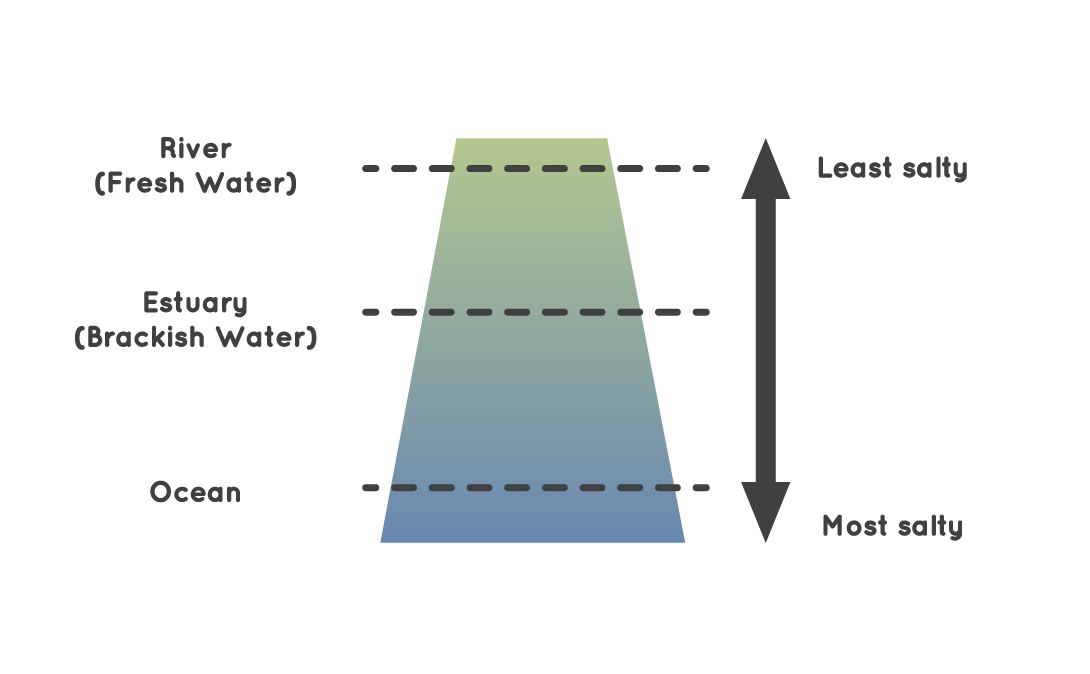climate change and succession both result in a change to the ocean ecosystem. what is succession?
The Curt Answer:
The bounding main covers nearly 70% of Earth'due south surface. So, information technology'south non surprising that information technology plays a large part in Earth's environment. As Globe warms, water in the ocean soaks upwards energy (heat) and distributes it more evenly across the planet. The ocean besides absorbs carbon dioxide from Earth'due south atmosphere. The additional heat and carbon dioxide in the ocean can change the environs for the many plants and animals that live there.
Why is the ocean of import for life on Earth?

The Bahamas seen from the Space Shuttle STS-52 in November 1992. Credit: NASA
The bounding main is important because it is a very large part of our planet. In fact, it covers seventy% of Earth's surface. The body of water is a dwelling house and food source for countless fish, mammals, plants, birds, and more.
The ocean plays an of import role in any happens in our environment on Earth. Even if yous live on land – like humans do – you wouldn't survive without the sea!
One example: without the sea, Earth would be much hotter than it is right at present. That's because the ocean absorbs heat from the Dominicus and spreads it more than evenly effectually our planet.
How does the sea soak upwardly heat from the Sun?

Earth's oceans help to absorb extra heat from the atmosphere considering water is skillful at storing heat. How do y'all think a airship filled with h2o would react to a flame differently than a balloon filled with air? Credit: NASA/JPL-Caltech
Water is fantabulous at storing heat. Water has a loftier heat chapters—it absorbs a lot of oestrus before information technology begins to get hot. Air, on the other hand, is non then swell at storing heat.
Globe's climate is warming due to homo activities. Equally Earth experiences a warming climate, we experience hotter air temperatures. The ocean does an splendid job of absorbing the actress estrus from the atmosphere, delaying the full bear upon of global warming.
The top few meters of the sea store as much estrus as Earth's unabridged temper. Then, every bit the planet warms, it's the bounding main that gets about of the extra free energy. More than ninety% of the global warming is going into the bounding main.
But if the bounding main gets likewise warm, then the plants and animals that alive at that place can become sick or even die.
How can a h2o balloon teach usa almost climate alter? Watch this video and discover out!
How are coral reefs affected by climate change?
Coral reefs are created by living creatures. Warming oceans acquired by climatic change are putting coral reefs in danger. Coral reefs are made by very fragile colonies of organisms that build skeletons around themselves.
Coral lives together with a sure kind of colorful algae. The algae brand nutrient using sunlight ¬– a procedure called photosynthesis. The algae share the food with the coral, and in turn, the coral gives the algae a safe and comfortable identify to live.
The 2 of them become along fine, living in clean, clear, shallow waters where the Sun shines through brightly. Fish and other sea creatures love coral too, because there are lots of nooks and crannies for them to hide in.
But the algae cannot carry out photosynthesis in h2o that is as well warm. The algae either die, or the coral spits it out. It's bad for the algae, the coral and the fish, because the coral lose their food sources and become weak and can die. This event is called coral bleaching, and it is a very serious problem in many ocean ecosystems effectually the world.
Read near what it's similar to be an sea scientist studying coral reefs.

A bleached coral next to an unbleached coral. Credit: Carolina Rogers/USGS
How does the bounding main soak up CO2?
Fish and other animals in the ocean breathe oxygen and give off carbon dioxide (CO2), just like country animals. Ocean plants take in the carbon dioxide and produce oxygen, just similar land plants. The ocean is cracking at absorbing COtwo from the air.
Even so, a lot of COii comes from human activities, too. For example, exhaust from cars, planes, and factories put actress carbon dioxide into our air. As well much carbon dioxide in the air is a problem, equally it causes the Earth to trap more heat. The bounding main absorbs most one-quarter of the CO2 that humans create when we burn fossil fuels (oil, coal, and natural gas).
Too much carbon dioxide in the body of water causes a problem chosen ocean acidification. You can read this article to acquire all about body of water acidification and its effects.
How does the bounding main touch on the climate?
The ocean absorbs estrus from the Sun and ocean currents move that warm water all around the planet. Ocean currents are like highways that carry water around the world. Rut (along with salt) is a major source of power for body of water currents.
Common cold water almost the N and South Poles sinks deeper into the ocean. H2o near the equator is warmed by the Lord's day. Then, the warm surface water moves closer to the poles where it cools and sinks.

The "great ocean conveyor belt" refers to the major ocean currents that move warm water from the equator to the poles and cold water from the poles back toward the equator. Credit: NASA/JPL-Caltech
As World'south climate warms, the water also warms melting bounding main ice. This warming could make the h2o less cold and less likely to sink. Without sinking common cold water, the body of water currents could irksome downwards or stop in some places. This could change the climate in places similar Europe that have milder climates thanks to the warm currents in the oceans around them.
Does the common salt in the ocean do anything?

Fresh water has lower salinity (saltiness) than estuary water, where the body of water water mixes with river water. The body of water itself is the most salty of all. Credit: NASA/JPL-Caltech
The amount of table salt in the ocean also affects currents. Saltier water is heavier than less salty water. When salty body of water water freezes, the water ice can no longer agree on to the salt. Instead, the common salt mixes with the water below making it saltier and heavier. Glaciers, land water ice and icebergs are made of fresh water, then what happens when this water ice melts? Skilful question!
The water in the Northward Atlantic sinks considering it'due south common cold, but likewise because it's salty. Being both cold and salty makes it actually dense and heavy, so it can sink very far. But if also much ice melts in the N Atlantic, the water could become less salty and affect ocean currents. NASA satellites are keeping a close eye on the melting ice, the ocean currents, and ocean life to better understand this complicated organisation.
Play Become With the Flow to utilise temperature, salinity, and sea currents to find treasure!
How does climate alter impact body of water level?

Equally World warms, sea levels are rising. Credit: NASA/JPL-Caltech
As Globe warms, NASA has observed that sea levels are rising. Water expands every bit information technology gets warmer. So, warm water takes upwardly more room in our oceans, and this leads to higher sea levels. Another reason that oceans are rising is due to melting ice on land. Glaciers and water ice sheets are large masses of water ice that sit on the state. As our planet warms, this water ice melts and flows into the oceans. More h2o in the oceans makes sea level higher.
NASA satellites are constantly measuring ocean level around the world. Acquire more nearly how we measure sea level with satellites.
Related NASA Missions

Airborne

Aqua

ICESat-2

Jason-three

OSTM (Jason-2)

Spotter-6 Michael Freilich

Suomi-NPP

Terra
Source: https://climatekids.nasa.gov/ocean/
Posted by: namcoursocied1958.blogspot.com


0 Response to "climate change and succession both result in a change to the ocean ecosystem. what is succession?"
Post a Comment